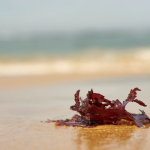Book Review of the Month – February, 2021 Have you ever wondered why being near the water is so appealing? For centuries, humans have had moments of clarity besides, or inside, bodies of water
Book Review of the Month – February, 2021 Have you ever wondered why being near the water is so appealing? For centuries, humans have had moments of clarity besides, or inside, bodies of water




